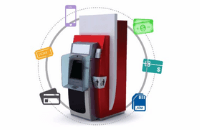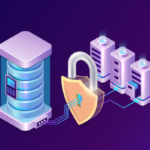E-Banking made its debut in UK and USA during 1960s and became prominently popular through electronic funds transfers and credit cards. The ATM is more than 40 years old now, with the first transaction being made at a branch of Barclays Bank in Enfield, London, on June 27, 1967. Since that time, ATMs have gone from being an exciting new technology to a tried-and-trusted part of banking infrastructure. From 1967, when the very first ATM was installed in London, it took 33 years for the industry to reach the 1 million mark. To reach 1.5 million, it has taken the industry only six years- that sure puts the phenomenal growth of the ATM industry into perspective.
Improved services, greater penetration
Expansion of alternate delivery channels to distant cities and villages has enabled banks to penetrate deeper into Pakistan’s socio economic system by offering various standard and novel e-banking services from tier 1 to tier III cities. With the launch of biometric ATMs and inter bank funds transfer via POS terminals, banks have been able to reach out to the un-banked population of grass-roots in Pakistan.
The several advantages of e-banking to the financial institutions include lower transaction costs, 24 hour services availability, expanded business territory and dramatically increased operational efficiency in day to day business. The obvious advantages to the consumer are convenience and flexibility on top of powerful and user-friendly financial management tools.
Strengthening channels, emergent trends
E-banking is flourishing in Pakistan as reflected by a 32% growth witnessed in it last year, said a report prepared by the State Bank.
Within the local banking sector, Allied bank has the largest ATM network with over 465 ATMs. Its nearest competitors are UBL and HBL, having ATMs of over 330 ATMs. 1LINK, the largest shared ATM network in Pakistan, is a consortium of 27 major banks, catering to a network of around 2771 ATMs in Pakistan.
According to a report titled ‘Retail Payment Systems of Pakistan paper-based and e-banking) of the State Bank of Pakistan, a total of Rs124.6 million e-banking transactions were recorded valuing Rs13.9 trillion during the last fiscal year (2008), showing a growth of 25.4% in numbers and 32.3% in amount when compared with the fiscal
year 2007.
During FY08, the volume and value of e-Banking channels (POS, Internet & call centre/IVR, and mobile) transactions in the country reached 20.0 million and Rs120.1 billion, depicting an increase of 15.6% in numbers and 31.9% in value as compared to 46.0% in numbers and 63.8% in value in the previous fiscal year.
According to the report, the quantity of active in-use debit / credit cards during FY08 reached 6.7 million, which shows an aggregate growth of 15.8%, compared with a 53.7% increase in the previous fiscal year.
The quantity of credit cards has in fact decreased by 8.9% as compared to 74% increase in the previous fiscal year, reaching 1.5 million.
In contrast, the debit cards registered a growth of 24.7 per cent as compared to 45.3% increase in previous fiscal year and stood at 5.0 million. Out of a total of 6.73 million cards, 0.391 million cards are chip based which is 5.81% of the total cards. Currently there are only a few banks which are issuing smart cards.
The report pointed out that the total number of ATMs during FY08 stood at 3,121, registering a growth of 21.0% as compared to 17.0% increase in the previous fiscal year.
The volume of Real Time Online Branches (RTOB) during FY08 stood at 5,282 and recorded a growth of 26.4% as compared to 5.0% decline in the previous fiscal year.
The volume of Point of Sales (POS) stood at 55,853, showing a growth of 21.0% in number as compared to 4.0% increase in the previous fiscal year.
According to the report, during FY 08 the volume and value of ATM transactions in the country reached 67.9 million and Rs453.0 billion, showing an increase of 31.8% in numbers and 43.2% in value as compared to 47.1% increase in numbers and 49.9% in value in the previous fiscal year.
ATMs are commonly used for small value cash withdrawal. ATMs usage for Intra-bank and inter bank funds transfer is increasing compared to the previous quarters with the value of such transfers reaching Rs. 13.125 billion, depicting an increase of 25.6. The inter-bank fund transfer is only offered by 11 banks on 1Link switch.
There are few banks which offer transactions through mobile. These transactions include payment through mobile (excluding utility bills payment), account to account funds transfer and 3rd party funds transfer.
Continuous innovations & future prospects
With a large unbanked population of 62 % in Pakistan, biometrics, branch POS and mCommerce is expected to emerge in future. Making e-Banking and e-Payments more affordable to banks and their clients in unbanked areas is still a major challenge, which has started to be addressed very recently with the launch of Biometric ATMs, mCommerce and funds transfer facilities via POS to the unbanked population of Pakistan. With the right checks and balances in place, a lot more people will be able to move smaller quantities of payments a lot quicker through various delivery channels such as the telecom infrastructure.
The use of credit cards has decreased by 8.9 % in FY 2008, whereas debit cards grew by 24.7 %. The use of prepaid cards will increase as compared to the credit cards due to the shrinkage in paying power of people. The prepaid card market is one of the fastest growing payment card segments.







